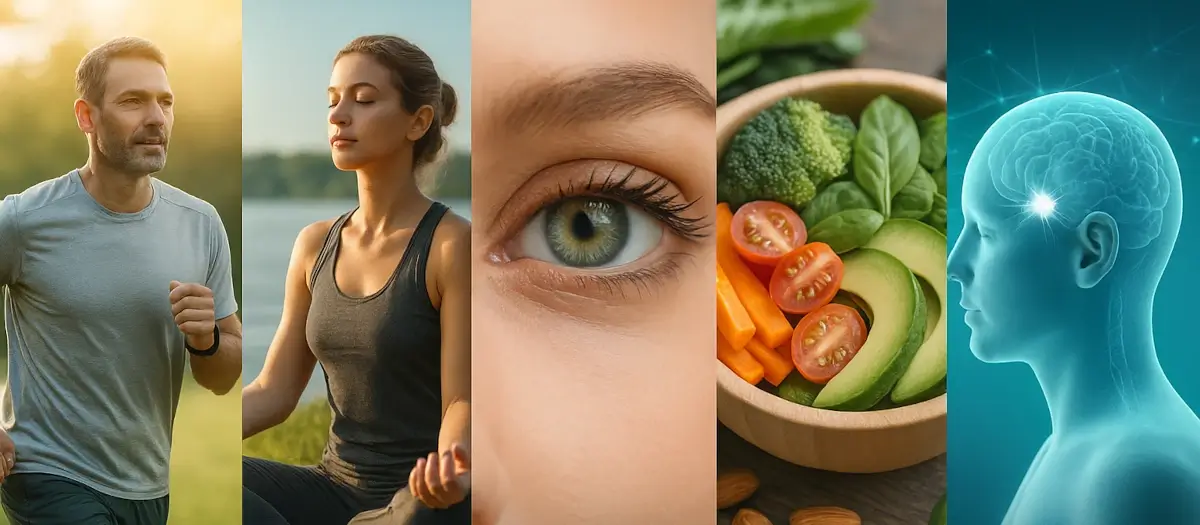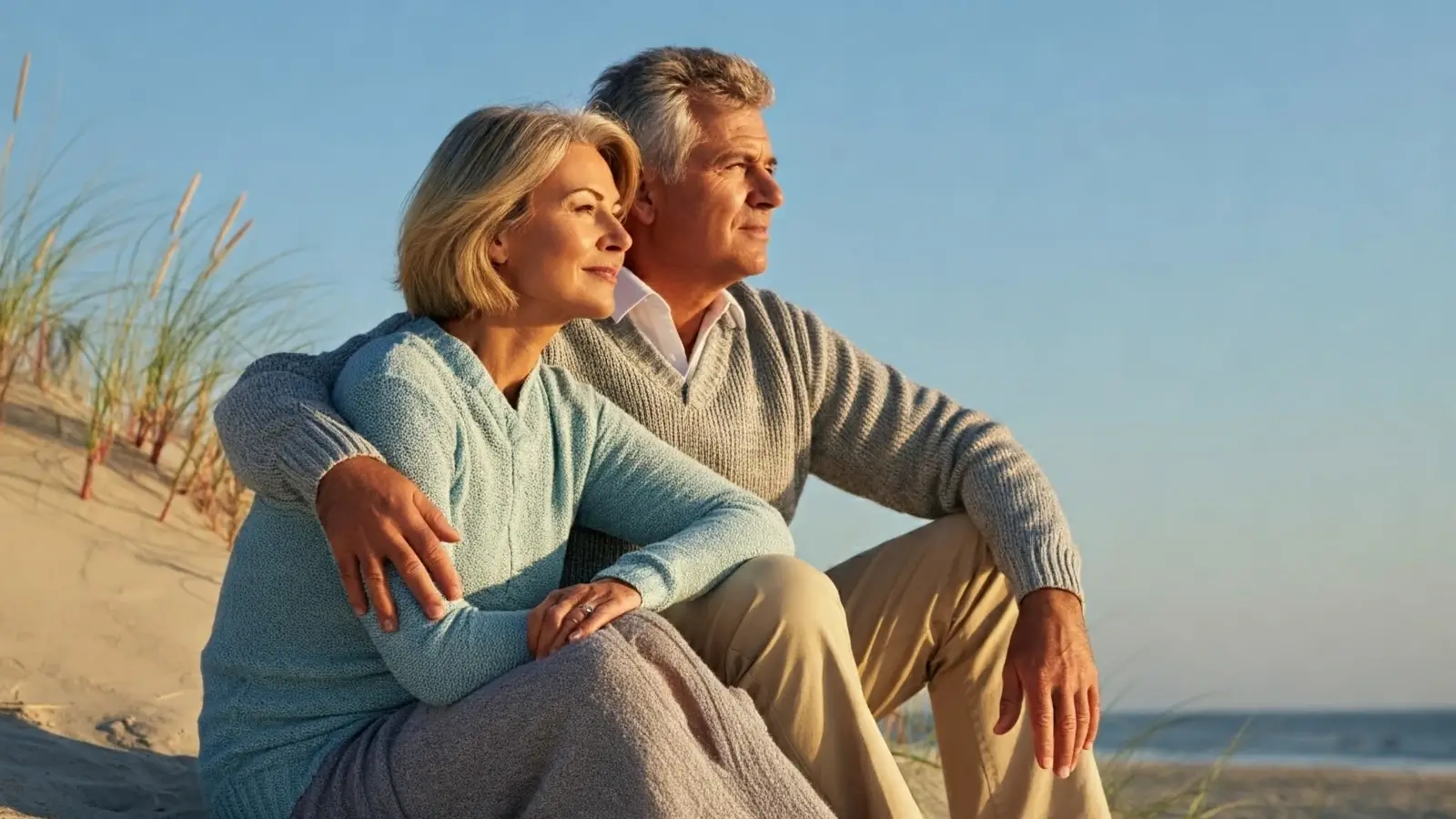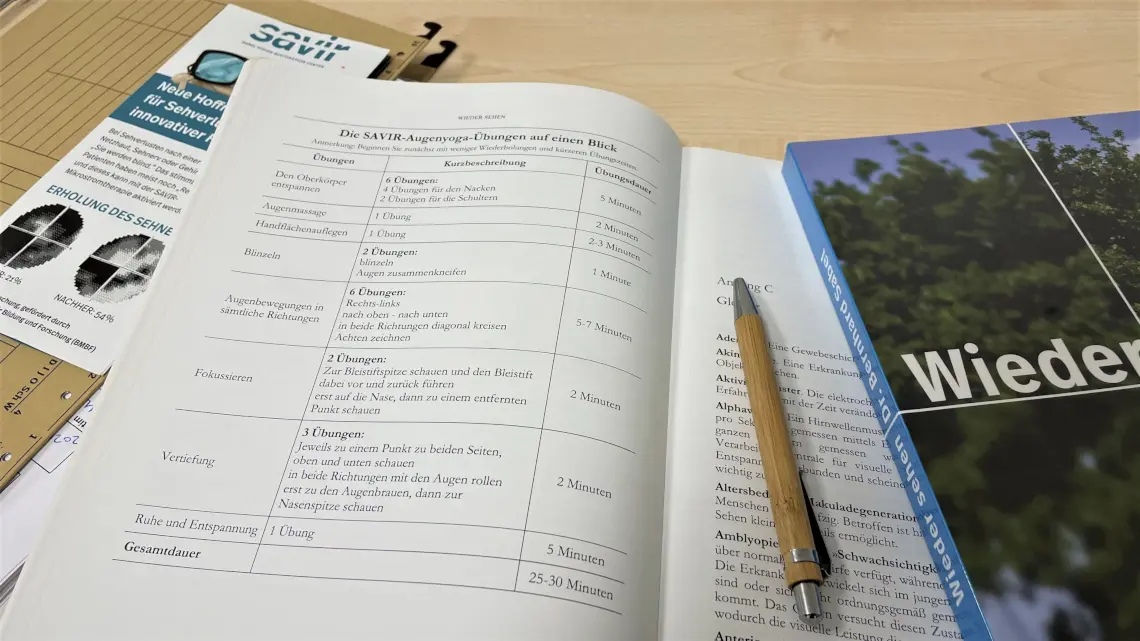Tips
-

Glaucoma and lifestyle: What you can do yourself
Glaucoma is a serious eye disease that, if left untreated, can lead to blindness. In addition to medical treatment by an ophthalmologist, there are many things you can do yourself to stop or even improve the progression of the disease, thereby enhancing your quality of life. A healthy lifestyle plays a key role in this.…
-

Residual vision in glaucoma: regaining hope
Glaucoma is an eye disease that often progresses slowly, making it crucial to make the most of the remaining vision. We want to show you how people with glaucoma can activate their residual vision to improve their quality of life. What Is Residual Vision? Residual vision refers to the visual ability that remains in areas…
-

Glaucoma and the person behind the eye – how to deal with the diagnosis
Glaucoma, also known as “green star” (Grüner Star), can initially feel like a frightening diagnosis. The idea that your vision may gradually deteriorate and that daily life could become overwhelming often triggers fear and uncertainty. This is exactly where the SAVIR Therapy comes in: we are convinced that glaucoma does not have to mean the…
-

Understanding Glaucoma – New Perspectives on a Complex Condition
Glaucoma, often referred to as “green star” (green cataract), is one of the leading causes of blindness worldwide. While elevated intraocular pressure was long considered the main cause, recent research shows that circulatory disorders, neurodegenerative processes, and genetic factors can also play a significant role. The disease is complex and requires an individual approach. Causes…
-

Review of the 39th World Ophthalmology Congress in Vancouver
A special highlight for the SAVIR Center was Prof. Dr. Bernhard Sabel’s participation in the 39th World Ophthalmology Congress 2024 in Vancouver. Prof. Sabel, former Vice President of the International Society for Low Vision Research and Rehabilitation (ISLRR), was elected as an official delegate and represented the ISLRR at the International Council of Ophthalmology (ICO),…
-

Eye training: simple exercise that can improve your vision
Like our arms and legs, our eyes are moved by contracting muscles. Attached to the back of the eyeball are several tiny muscles that can pull the eye in all directions. Keeping the eye muscles in shape with eye training is therefore essential for good vision. This article is also available as a video on…
-
Useful and Free Apps for People With Visual Impairment
People with visual impairments often have a narrower or incompleted vision, some of them also suffer from foggy or blurred vision. For them, the daily activities are limited in various aspects. Thanks to the development of mobile technology, many supportive functions and app are developed, in order to help people with low-vision. In this article,…
-
Glaucoma Patient: Be Careful With These 4 Yoga Positions
Even today, glaucoma patients are advised to avoid some certain physical activities such as pull-ups or weightlifting, because it may lead to a significant rise of intraocular pressure. The headstand positions are also considered to be dangerous. However, the influence of yoga positions has been not known, up until now.. Nowadays, yoga is a chosen…


